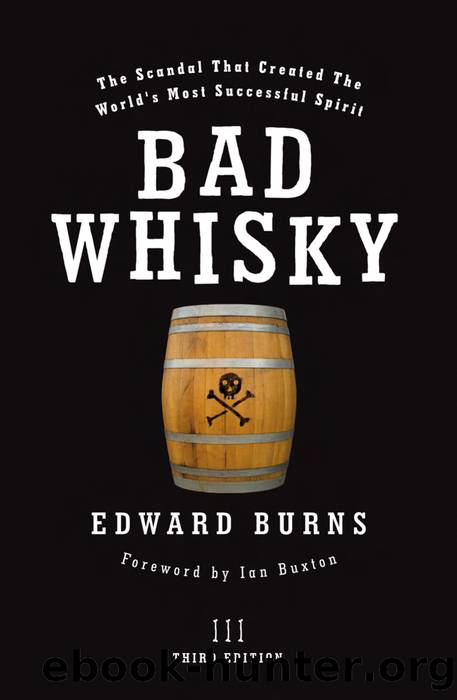Bad Whisky by Edward Burns

Author:Edward Burns
Language: eng
Format: epub
ISBN: 9781906476915
Publisher: Neil Wilson Publishing
Published: 2012-01-15T00:00:00+00:00
A Lack of Shellac
It wasnât long before letters from chemists hit the pages of their trade periodical, The Pharmaceutical Journal. Some displayed concern and a desire to learn the facts surrounding the new Act, while others revealed a knowledge which they wished to share with their brethren. Copies of correspondence with the Inland Revenue formed a part of many of these, and there existed a united front in evading the clutches of a wavering law which might just as easily taint the innocent as the guilty.
One letter, dated September 1866, echoed the confusion that had arisen regarding methylated spirits and âmethylated finishâ (or simply âfinishâ). The writer reminded his colleagues that to sell the former they needed a licence, but for the latter they did not, and the new legislation had no affect on this whatsoever. He advised all chemists to test their âfinishâ to ensure that it had the mandatory minimum of one ounce of shellac or sandarac for every gallon of spirits. Any less, and it could no longer be termed âfinishâ.lxxxviii
It was generally accepted among druggists that the retailing of âfinishâ was one way in which they could sell methylated spirits without a licence, and it was therefore in their interest to have as little of the shellac in it as the Excise would allow. Initially the Board of Inland Revenue had issued an order to the effect that âthe solution must contain not less than three ounces of shellac or other resinous substance in every gallon to entitle it to the name of âfinishâ.lxxxix However, the Board was then informed that âwhen made of this strength it was unsuited to some of the purposes for which it was required, and accordingly the strength was reduced to one ounce to the gallon.â
In 1867 druggists were actively encouraged to take out a methylated spirits licence through the combined reduction of the fee to 10s and the Inland Revenueâs change to the original three ounces of shellac in a gallon of âfinishâ. The larger proportion of gum would have made it easier to detect â whether by the druggist or the authorities â and it was felt that many would simply pay the cost and avoid the risk of prosecution. Although a lesser fee, the Government may have found an increase in revenue in this area as a result of the large number of druggists who had previously sold just âfinishâ and were now licensed for methylated spirits.
This alteration in the composition of âfinishâ was followed by numerous spot-checks by Excise Officers. The Pharmaceutical Society had apparently not had sufficient warning of the new order so as to inform its members, and consequently many were caught out. Of 13 samples obtained from different localities, only one contained the proper quantity of resin.xc The blame was laid squarely at the door of manufacturers and, once again, all chemists were reminded to carry out tests on all delivered batches so as to keep themselves right. It was the druggist who would be fined â not the manufacturer.
Download
This site does not store any files on its server. We only index and link to content provided by other sites. Please contact the content providers to delete copyright contents if any and email us, we'll remove relevant links or contents immediately.
Zero to IPO: Over $1 Trillion of Actionable Advice from the World's Most Successful Entrepreneurs by Frederic Kerrest(4397)
Machine Learning at Scale with H2O by Gregory Keys | David Whiting(4256)
Never by Ken Follett(3875)
Harry Potter and the Goblet Of Fire by J.K. Rowling(3803)
Ogilvy on Advertising by David Ogilvy(3548)
Shadow of Night by Deborah Harkness(3324)
The Man Who Died Twice by Richard Osman(3037)
Book of Life by Deborah Harkness(2890)
Will by Will Smith(2872)
The Tipping Point by Malcolm Gladwell(2864)
0041152001443424520 .pdf by Unknown(2812)
My Brilliant Friend by Elena Ferrante(2790)
How Proust Can Change Your Life by Alain De Botton(2769)
Purple Hibiscus by Chimamanda Ngozi Adichie(2730)
How to Pay Zero Taxes, 2018 by Jeff A. Schnepper(2621)
Hooked: A Dark, Contemporary Romance (Never After Series) by Emily McIntire(2527)
Rationality by Steven Pinker(2325)
Borders by unknow(2279)
Can't Hurt Me: Master Your Mind and Defy the Odds - Clean Edition by David Goggins(2267)
